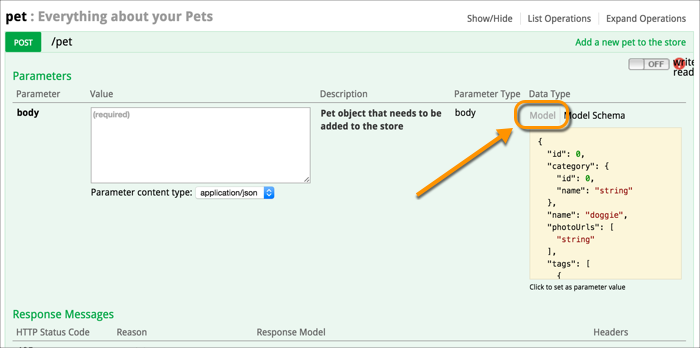
- #Swagger editor nested yaml update
- #Swagger editor nested yaml software
- #Swagger editor nested yaml code
- #Swagger editor nested yaml download
Although existing tools are available for building HTML documents from Swagger, we decided to create our own so we could add special handling for our x-sc-* extensions. To make the API document more user friendly, we implemented a tool (swagger-to-html.php) that converts the YAML document to static HTML. Show more Show more icon Converting a YAML document into an HTML page

If you use Eclipse as an IDE, you can use YEdit, which checks and highlights YAML syntax and provides editing and formatting features. The red arrows overlaid on the screenshot indicate the correspondence between the post: and get: definitions in the OpenAPI Specification-based leads.yaml file, and the documentation for the POST and GET APIs in the preview document. Here’s how the Swagger Editor UI looks after you import a leads.yaml definition:
#Swagger editor nested yaml code
The code editor indicates any formatting errors. The display pane on the right side shows the formatted document and reflects changes that you make in the code editor in the left pane. With Swagger Editor, for example, you can create or import API documentation and browse it in an interactive environment. Several Swagger editing tools help you to create API documents easily and ensure that they conform to the OpenAPI spec. You can adapt our examples to document your own RESTful APIs with Swagger and - using the techniques you learn in this article - create your own Swagger customizations.
#Swagger editor nested yaml download
The solutions that we developed are available for download (see ” Downloads“).

#Swagger editor nested yaml software
Swagger documents can be processed by various programming languages and can be checked into source control for version management during the software development cycle.īut Swagger has shortcomings of its own. The framework provides the OpenAPI Specification (formerly known as the Swagger specification) for creating RESTful API documentation formatted in JSON or YAML, a human-friendly superset of JSON.

The open source Swagger framework helps remedy these issues for API consumers and developers. Those types of documents are also harder to integrate into an automated testing application.

Those formats can make collaboration and document version control difficult, especially for applications that have many APIs or resources, or when APIs are under iterative development. Without an adequate contract service, many REST API providers use Microsoft Word documents or wiki pages to document API usage. For this sample, you can use the api key `special-key` to test the authorization filters."Īpplication.Most web applications support RESTful APIs, but - unlike SOAP APIs - REST APIs rely on HTTP methods and lack a Web Services Description Language (WSDL) equivalent to define request and response structures between consumers and providers. You can find out more about Swagger at () or on (). src/main/resources/static/swagger-apis/api1/swagger.yaml 1ĭescription: "This is a sample server Petstore server. The static yaml file is fetched from Swagger Editor, put it under the resources directory. The example below is using static yaml files to generate documentation. Swagger provides swagger-ui and some jars to host a documentation, you can use Java annotations or yaml files to autogenerate the swagger documentation.
#Swagger editor nested yaml update


 0 kommentar(er)
0 kommentar(er)
